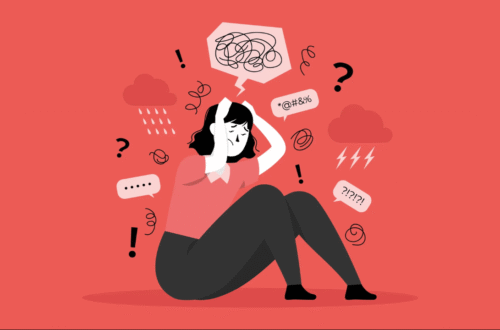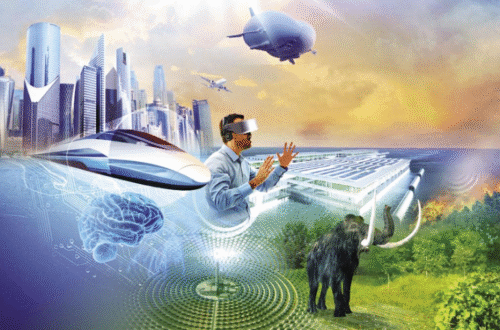Social media is one of the most transformative forces of the 21st century. It has changed how people communicate, share ideas, promote businesses, engage in politics, and even form their identities. But it wasn’t always this way. The platforms we now scroll daily didn’t exist just two decades ago. To understand how we got to today’s digital landscape — one that includes apps like Threads — we need to look at where it all began.
The journey from MySpace to Threads is more than just a timeline of platforms. It’s a story about how technology, culture, and communication have evolved together. Each phase of social media has reflected the desires, frustrations, and creativity of its users. And it continues to change, faster than ever.
MySpace: The First Wave of Personal Expression (2003–2008)
In the early 2000s, MySpace emerged as one of the first true social media giants. It wasn’t the first social network ever built, but it was the first to hit mainstream popularity. MySpace gave users the freedom to express themselves in ways that had never been possible online before.
Users could:
- Customize their profiles with HTML and music
- Add friends, leave comments, and build social circles
- Rank their “Top 8” friends
- Discover new bands and pop culture trends
MySpace was both a playground and a stage. It let users craft digital identities that were loud, colorful, and uniquely their own. But it wasn’t built for mobile phones or real-time updates, and as the internet changed, so did user expectations.
Facebook: The Era of Real Identity and Network Growth (2004–2015)
Facebook launched in 2004 and initially focused on college students. What set it apart was its emphasis on real identity. Users signed up with their real names, real schools, and real information. The platform quickly expanded beyond campuses and became the dominant force in social networking.
Key innovations included:
- The News Feed
- Photo sharing and tagging
- Groups and Events
- Pages for businesses, celebrities, and communities
- A mobile app experience
Facebook’s algorithm-driven feed changed how people consumed content. It wasn’t just about connecting with friends — it became about broadcasting to an audience and following updates from brands, public figures, and media outlets.
But over time, users grew tired of Facebook’s cluttered experience, privacy scandals, and information overload. It was still huge, but cracks were beginning to show.
Twitter and Real-Time Conversation (2006–2022)
In 2006, Twitter introduced something different: a minimalist platform based on short updates. At first, 140 characters felt limiting. But that limit became a feature, not a bug.
Twitter became the go-to platform for:
- Breaking news
- Political discourse
- Memes and trending topics
- Direct interaction between celebrities and fans
- Real-time public conversation
Hashtags were born on Twitter and quickly became part of global culture. The platform’s simplicity allowed movements like #BlackLivesMatter and #MeToo to spread quickly. But with time, it also became a platform for toxic debate, trolling, and misinformation — challenges that would grow more serious as its user base expanded.
Instagram: Visual Storytelling Takes Over (2010–Present)
By the 2010s, people wanted less text and more visuals. Instagram delivered exactly that. Originally a photo-sharing app with stylish filters, it quickly turned into a platform for influencers, brands, and everyday users to curate visually appealing lifestyles.
Key features included:
- Stories (borrowed from Snapchat)
- Reels (borrowed from TikTok)
- Influencer culture and sponsored content
- Explore page and algorithm-based feed
Instagram shifted the focus from words to images and aesthetics. But it also introduced the idea of social media as performance. Users carefully crafted posts for likes, validation, and reach — sometimes at the cost of authenticity.
Snapchat and Ephemeral Sharing (2011–2018)
Snapchat introduced the idea that not everything needs to be permanent. Messages, photos, and videos could disappear after viewing, making interactions feel more private and casual.
Snapchat’s impact included:
- The rise of the “Story” format
- Face filters and augmented reality
- One-on-one streaks and intimate sharing
- A younger user base that craved authenticity
Snapchat didn’t dominate in the way Facebook or Instagram did, but its influence reshaped how people wanted to communicate: fast, fun, and fleeting.
TikTok: The Algorithm That Knew You (2018–Present)
TikTok changed everything again by making the algorithm the star of the show. Unlike other platforms, TikTok didn’t require you to follow anyone to enjoy content. Its For You Page introduced you to content based on your behavior — often before you even knew what you liked.
This led to:
- Viral trends spreading globally in hours
- Short-form video becoming the norm
- A creator economy built on authenticity and experimentation
- Powerful cultural moments driven by ordinary users
TikTok’s design encourages creativity, spontaneity, and interaction — and it’s especially popular among younger generations. It also sparked privacy concerns and global debates about data use and government surveillance.
Threads: The New Text-Based Experience (2023–Present)
In 2023, Meta launched Threads, a new platform aimed at offering a text-based social experience as an alternative to Twitter. Built to integrate with Instagram, Threads tried to provide a space for real-time conversation without the toxic debate often associated with legacy platforms.
Threads offered:
- Integration with your Instagram account and followers
- A clean, text-focused feed
- Limits on overly political or harmful content
- A fresh start for users tired of older platforms
While still in its early stages, Threads reflects a growing demand for simplified, civil conversation — where people can share thoughts and updates without the algorithmic chaos of other platforms.
What Drives the Evolution of Social Media?
Looking at this timeline, a few key themes emerge that have driven the evolution of social media:
- Shifting User Expectations
As each generation of users enters the digital space, their preferences shape the platforms. What worked in 2005 doesn’t appeal in 2025. - Mobile-First Design
Social media’s success today depends on how well it performs on a smartphone. Mobile accessibility, intuitive UX, and short-form content are now essential. - Algorithm Control
Platforms have moved from chronological feeds to algorithm-driven experiences, prioritizing engagement, relevance, and ad revenue. - Privacy and Trust
As people grow more concerned with privacy, platforms that prioritize user control and transparency have a growing edge. - Monetization and Creators
Social media is no longer just for connecting with friends — it’s an income source. Platforms now compete to attract creators through ad revenue shares, creator funds, and tipping tools.
Where Is Social Media Headed Next?
From MySpace to Threads, each era of social media has built on the last while introducing new ways to connect and create. But the journey isn’t over. The future may include:
- Decentralized platforms where users own their data
- AI-driven experiences that create content or curate feeds with hyper-personalization
- Virtual social spaces in the metaverse
- Smaller, community-driven platforms that focus on niche interests and real engagement
One thing is certain: social media will keep evolving. And just like in the past, users will play the biggest role in shaping what comes next.
Conclusion
The story of social media is a reflection of how we evolve as people. From MySpace’s customizable profiles to Threads’ clean, conversation-focused design, every platform tells us something about what we value at a particular moment in time.
Some platforms fade. Others adapt. But the core idea remains the same — a digital space where people can connect, express, and belong. And as technology continues to grow, so too will the ways we share our lives online.Tech is future, and the future of social media is still being written — one post, one thread, one innovation at a time.





